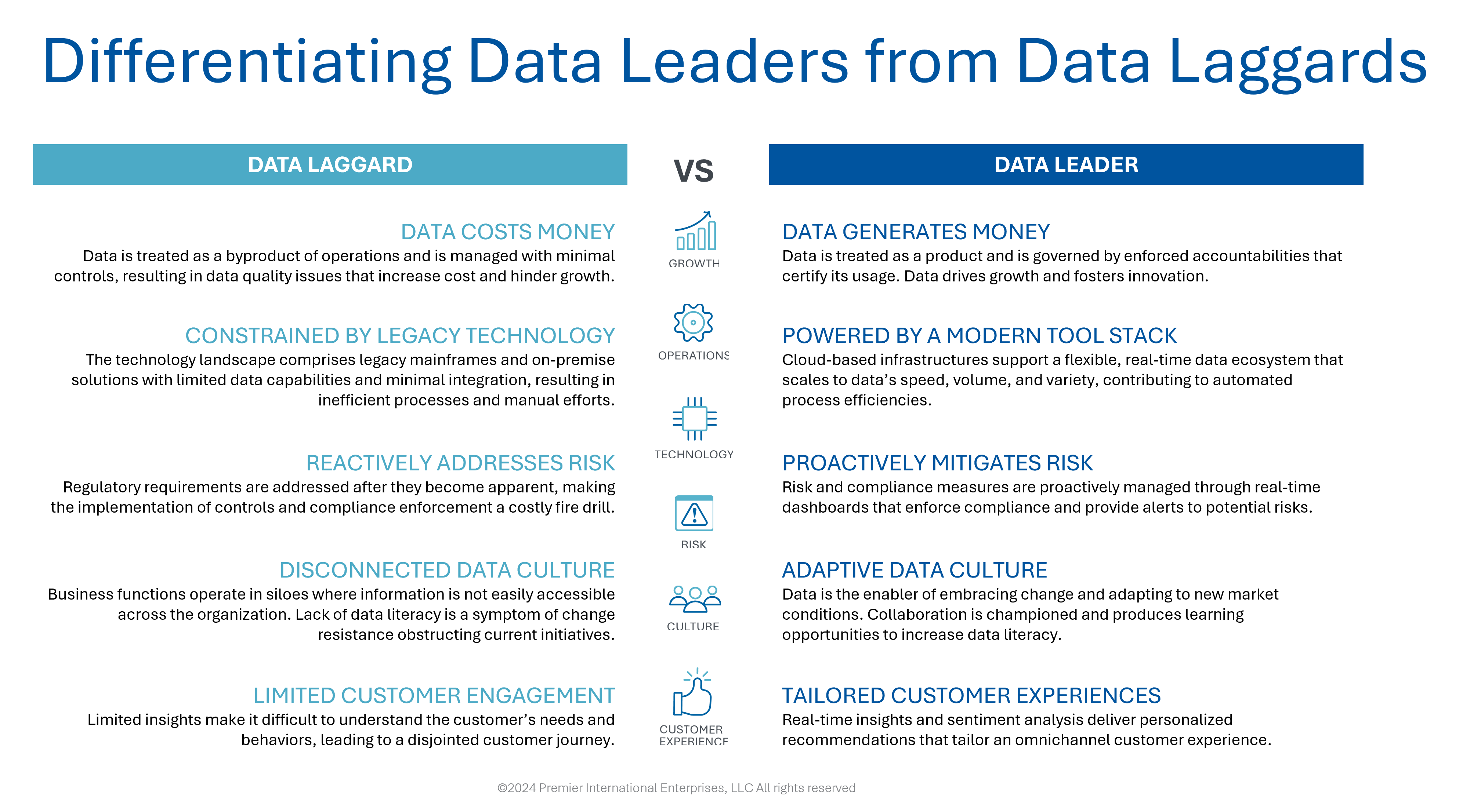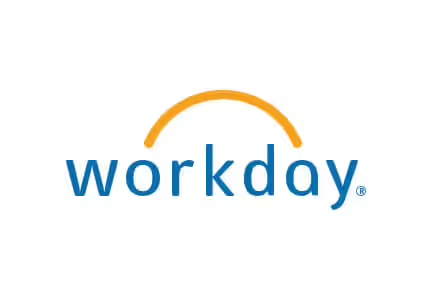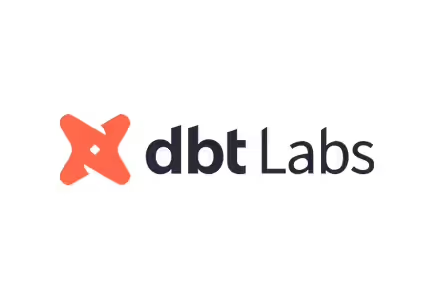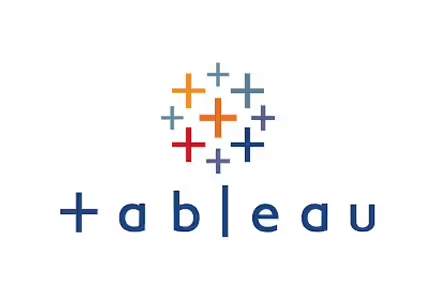Data best practices for modern organizations

Haunted by the Unknown: The Two Fears Every Data Leader Faces
Every October, we find ourselves drawn to what hides in the shadows. But in enterprise data, the real fear isn’t what jumps out; it’s what stays hidden.
In business, the darkness doesn’t wear a mask. It creeps in through uncertainty. Quietly. Systematically. And it often originates not outside the organization, but deep within its data infrastructure.
Across industries, two specific fears continue to surface. Both thrive in the murky space between speed and understanding.
1. The Fear of Broken Truth
Every organization is chasing modernization with AI-powered insights that promise agility and foresight. Yet Gartner reports that 60% of digital transformations stall. The reason? A lack of trust in internal data.
Velocity increases. But lineage becomes a blur. Automation scales. Governance struggles to catch up. When a CFO starts questioning the numbers, or when two dashboards disagree on a single KPI, what emerges isn’t just inefficiency. It’s doubt.
And doubt, as it turns out, is expensive. Deloitte estimates the cost of poor data quality at $12.9 million per year for the average organization.
Trust in data isn’t a byproduct of more tools. It comes from clear traceability. Data lineage and governance must be embedded directly in the operational core, not as afterthoughts, but as the scaffolding for every decision. When insight can be traced to its origin, confidence follows.
2. The Fear of Unseen Bias
Artificial intelligence is the new frontier. But like all frontiers, it comes with shadows.
Many enterprises are learning the hard way that opacity in models creates risk. Gartner predicts that by 2026, 60% of AI projects will fail. The root cause? Foundations that weren’t designed to support AI in the first place.
We see it often: models that drift quietly, algorithms that inherit bias, recommendations that look accurate but lack context. And the cost isn’t just technical, it’s cultural.
When leaders can’t explain why a system made a decision, they begin to lose confidence in every decision. Which is why explainability in AI is no longer a feature; it's a necessity. Frameworks that prioritize transparency ensure every model output can be traced, audited, and understood because real intelligence isn’t just predictive, it’s accountable.
Turning Fear into Foresight
Uncertainty doesn’t vanish with new software. It only recedes when clarity is baked into the system. And clarity isn’t a dashboard. It’s an environment. Built on verified lineage, sustained through active governance, and strengthened by transparent models and continuous validation.
Enterprises that prioritize clarity replace digital anxiety with data confidence. Architectures built for understanding help every stakeholder see, question, and trust the insights in front of them.
That’s why every transformation must begin with a simple but high-stakes question:
Can we trust our data enough to act boldly?
Because true modernization doesn’t just update systems, it upgrades confidence.

Why Data Visualization Is Important
What is Data Visualization?
With so much information being collected through data analysis in the business world today, we must have a way to paint a picture of that data so we can interpret it. Data visualization gives us a clear idea of what the information means by giving it visual context through maps or graphs. This makes the data more natural for the human mind to comprehend and therefore makes it easier to identify trends, patterns, and outliers within large data sets.
Why is Data Visualization Important?
No matter what business or career you’ve chosen, data visualization can help by delivering data in the most efficient way possible. As one of the essential steps in the business intelligence process, data visualization takes the raw data, models it, and delivers the data so that conclusions can be reached. In advanced analytics, data scientists are creating machine learning algorithms to better compile essential data into visualizations that are easier to understand and interpret.
Specifically, data visualization uses visual data to communicate information in a manner that is universal, fast, and effective. This practice can help companies identify which areas need to be improved, which factors affect customer satisfaction and dissatisfaction, and what to do with specific products (where should they go and who should they be sold to). Visualized data gives stakeholders, business owners, and decision-makers a better prediction of sales volumes and future growth.
What Are The Benefits of Data Visualization?
Data visualization positively affects an organization’s decision-making process with interactive visual representations of data. Businesses can now recognize patterns more quickly because they can interpret data in graphical or pictorial forms. Here are some more specific ways that data visualization can benefit an organization:
- Correlations in Relationships: Without data visualization, it is challenging to identify the correlations between the relationship of independent variables. By making sense of those independent variables, we can make better business decisions.
- Trends Over Time: While this seems like an obvious use of data visualization, it is also one of the most valuable applications. It’s impossible to make predictions without having the necessary information from the past and present. Trends over time tell us where we were and where we can potentially go.
- Frequency: Closely related to trends over time is frequency. By examining the rate, or how often, customers purchase and when they buy gives us a better feel for how potential new customers might act and react to different marketing and customer acquisition strategies.
- Examining the Market: Data visualization takes the information from different markets to give you insights into which audiences to focus your attention on and which ones to stay away from. We get a clearer picture of the opportunities within those markets by displaying this data on various charts and graphs.
- Risk and Reward: Looking at value and risk metrics requires expertise because, without data visualization, we must interpret complicated spreadsheets and numbers. Once information is visualized, we can then pinpoint areas that may or may not require action.
- Reacting to the Market: The ability to obtain information quickly and easily with data displayed clearly on a functional dashboard allows businesses to act and respond to findings swiftly and helps to avoid making mistakes.
Which Data Visualization Techniques are Used?
There are many different methods of putting together information in a way that the data can be visualized. Depending on the data being modeled, and what its intended purpose is, a variety of different graphs and tables may be utilized to create an easy to interpret dashboard. Some visualizations are manually created, while others are automated. Either way, there are many types to meet your visualization needs.
- Infographics: Unlike a single data visualization, infographics take an extensive collection of information and gives you a comprehensive visual representation. An infographic is excellent for exploring complex and highly-subjective topics.
- Heatmap Visualization: This method uses a graph with numerical data points highlighted in light or warm colors to indicate whether the data is a high-value or a low-value point. Psychologically, this data visualization method helps the viewer to identify the information because studies have shown that humans interpret colors much better than numbers and letters.
- Fever Charts: A fever chart shows changing data over a period of time. As a marketing tool, we could take the performance from the previous year and compare that to the prior year to get an accurate projection of next year. This can help decision-makers easily interpret wide and varying data sources.
- Area Chart (or Graph): Area charts are excellent for visualizing the data’s time-series relationship. Whether you’re looking at the earnings for individual departments on a month to month basis or the popularity of a product since the 1980s, area charts can visualize this relationship.
- Histogram: Rather than looking at the trends over time, histograms are measuring frequencies instead. These graphs show the distribution of numerical data using an automated data visualization formula to display a range of values that can be easily interpreted.
Who Uses Data Visualization?
Data visualization is used across all industries to increase sales with existing customers and target new markets and demographics for potential customers. The World Advertising and Research Center (WARC) predicts that in 2020 half of the world’s advertising dollars will be spent online, which means companies everywhere have discovered the importance of web data. As a crucial step in data analytics, data visualization gives companies critical insights into untapped information and messages that would otherwise be lost. The days of scouring through thousands of rows of spreadsheets are over, as now we have a visual summary of data to identify trends and patterns.
Conclusion
We need data visualization because the human brain is not well equipped to devour so much raw, unorganized information and turn it into something usable and understandable. We need graphs and charts to communicate data findings so that we can identify patterns and trends to gain insight and make better decisions faster.
At Definian, we understand the importance of data visualization and what it means to our clients. We provide them with user-friendly and beautiful visualization features and tools to depict their data in a clear and meaningful way. We’re here to ensure our clients have everything they need to make quick and informed decisions based on sound data that is easy to interpret. Contact our friendly team of professionals at analytiks today to hear how we can better your business.

ERP Readiness Starts with Clean Data: Inside a Successful MDM Strategy
Accurate, consistent, and well-governed master data is critical to a business’ operations. For our manufacturing client, their master data was managed inconsistently across systems, creating inefficiencies in operations. The organization was uncertain about the effectiveness of the proposed ERP implementation. This feeling was driven by concerns over data quality, reporting issues, and duplication across legacy systems – all of which were impacting business efficiency.
As the client prepared for a future Enterprise Resource Plann (ERP) consolidation, an MDM strategy was essential to ensure data integrity, reduce manual workarounds, and improve decision-making for master data used throughout the organization. Definian stepped in to provide a helping hand in crafting an MDM strategy and potential solutions to set them up for their future implementation.
Business Challenges
- System Fragmentation Due to M&A: The client had multiple business units on different legacy ERP systems resulting from mergers and acquisitions, leading to data duplication and inconsistent reporting.
- Duplication in Supplier information led to inaccurate supplier performance reporting, operational inefficiencies, and even strained supplier relationships. Inaccurate addresses created problems with product returns and on-time payments.
- Duplicate customer records led to duplicative communications and damaged relationships. Inaccurate delivery addresses and contact details disrupted communication, delayed payments, and sometimes led to missed deliveries.
- Lack of a Centralized Source of Truth: There was no authoritative system for customer, product, or supplier data as the information is all coming from different legacy systems. A lack of a source of truth hindered reporting and diminished operational efficiency.
- SKU Proliferation: Significant data quality issues stemmed from SKU proliferation. Our root cause analysis revealed that poor interfacing and design decisions between their product configurator and ERP system led to the continuous creation of redundant and overly specific product records.
- The product configurator created a new SKU for every unique product permutation, and the ERP blindly accepted each as a new, valid SKU.
- Existing processes resulted in millions of SKUs, despite the client offering only around 50 base products.
- Analysis showed that 80% of SKUs had no inventory or transactional activity for over two years, indicating massive redundancy.
- There was no SKU lifecycle management process, and no logic in place to check for existing similar configurations before creating new SKUs.
- Lack of Governance and Ownership: There was no defined data governance model to manage data quality, stewardship, or ownership, which is critical for sustained MDM success.
Facing these business challenges and heading into a future ERP implementation, the client needed to assess the best steps to take to ensure success. It was imperative they considered MDM as one of those steps.
How do I know that I need MDM?
There are four primary triggers for an MDM Implementation:
- My organization is considering an ERP implementation. There is no better time to investigate your data management process and data quality than when you are considering a mass migration to a new target system. A solid MDM plan can save your resources hours upon hours of work dealing with bad data.
- My organization is considering an MDM tool. The right tool for you is out there, but you need experts to help you figure out just exactly how to utilize that tool.
- My organization has gone through mergers and acquisitions. M&A can be a headache on data quality, as numerous legacy systems are often brought into the mix and allow for duplication and inaccurate reporting.
- My organization has a Product Information Management system that needs an overhaul. Your PIM needs assistance, as it is likely to create more SKUs than you need due to custom product attributes.
Our client faced all these issues, so it was clear from a business perspective to pursue an MDM implementation. In came Definian, and after months of work, the team delivered solutions and a scalable strategy.
MDM Strategy and Solutions We Delivered
- Master Record Structures: Defined master record structures for customer and product data, focusing on essential attributes and matching rules critical to daily business operations. This supports data consolidation and cleansing efforts.
- Key attributes included Customer Name and Class and how to match up to the address and contact information in the legacy systems. This analysis streamlined the uncovering of duplicate Customers, including over 1300 duplicate groups in one legacy system.
- Through match and merge rules, the entity resolution process will accurately consolidate these records, merging multiple customer instances into a single, authoritative golden record.
- Through this consolidation, the client maintains an accurate, unified customer record, which simplifies reporting and eliminates redundant data management efforts. This process establishes a trustworthy foundation for operational efficiency, informed decision-making, and reliable strategic insights.
- Governed Workflows: Developed onboarding workflows determining where data should originate (e.g., engineering (PLM) vs. sales (ERP)) and how approvals and data updates should be managed, tailored to centralized MDM models.
- This allows for a streamlined process in which everyone knows their role, and the process does not rely on outside factors to inhibit the efficiency of data entry. Reducing manual entry minimizes user error and its impact.
- Root Cause Analysis of SKU Issues: Definian identified the configurator logic and ERP behavior as causes for these issues. We provided the following recommendations to the client as solutions:
- Implement SKU lifecycle management: to archive or purge inactive SKUs.
- Add validation mechanisms to the ERP to detect and reuse existing SKUs
- Improve cross-functional communication between business units and system stakeholders to reduce fragmentation.
- Integrate MDM as a preemptive step before ERP consolidation to create a clean, authoritative source of master data, including products.
- Data Governance Framework: Introduced accountability for data ownership and stewardship within master data domains, and embedded governance considerations into MDM designs to ensure long-term data health.
- Support for Future ERP Migration: Positioned MDM as a preparatory step to ensure clean, consistent data feeds into the planned ERP consolidation, reducing downstream complexity and risk.
Definian provided a pathway to data readiness for the client. The business benefitted from proactively addressing their data quality before launching an ERP transformation, recognizing that clean and governed master data is foundational for successful digital transformation. It is important to build the foundation and toolbox for migration with an MDM framework in place and smartly look for a partner to help your organization solidify that foundation before embarking on an ERP migration. By being proactive, this client allowed themselves to understand the best tools to utilize the build up their data quality before it needs to be fixed.
Looking for a reliable partner for your ERP implementation? Reach out to our data experts for more information!

Navigating HCM Data Compliance in an Era of Policy Shifts
Recent changes in federal reporting requirements are forcing organizations to rethink how they manage and maintain Human Capital Management (HCM) data. The rollback of affirmative action mandates, evolving EEOC guidelines, and new executive orders mean that HCM data leaders must reassess their data retention policies, compliance strategies, and reporting mechanisms. These shifts create practical challenges: what data must be retained, how should it be structured, and how can organizations ensure they meet compliance standards without introducing legal risks? Staying ahead requires a proactive approach to understanding these regulations and implementing structured data management strategies.
The Legal Landscape: EEOC, AAP, and Executive Orders
Recent policy shifts have altered the way companies must handle demographic and employment data. A key example is the revocation of Executive Order 11246, which previously mandated affirmative action programs (AAP) for federal contractors. While AAP requirements may be gone, Equal Employment Opportunity Commission (EEOC) reporting obligations remain. This means that businesses must still retain and report demographic data, but they must ensure it is not used in ways that could be interpreted as discriminatory in hiring, promotions, or transfers.
From a data management perspective, this creates a unique challenge: companies must maintain high-quality demographic data for compliance while ensuring that such data does not influence employment decisions in an unlawful way.
What This Means for HCM Data Migrations
For organizations transitioning to Oracle HCM Cloud or another ERP system, these changes impact how demographic data is handled during conversion. Key considerations include:
- Retaining Critical Data Fields: Even if affirmative action reporting is no longer required, demographic details like race, gender, and veteran status should still be preserved for EEOC reporting and internal compliance audits.
- Handling Opt-In and Missing Data: Employees can choose to opt out of providing demographic data. However, for reporting purposes, some organizations may attempt to infer or categorize missing data—a risky practice that can lead to ethical issues or compliance violations.
- Role of Legal and HR Collaboration: Given the legal complexities, data migration specialists should work closely with HR and legal teams to ensure that reporting structures comply with the latest regulations.
Best Practices for HCM Data Conversions
- Define Required vs. Optional Data Fields: Understanding which fields are legally required vs. optional helps create clear data validation rules.
- Implement Pre-Validation Checks: Running pre-validation checks before migration ensures missing or incorrect data can be corrected before entering the new system.
- Leverage Automated Tools: Specialized data migration tools or pre-built data validation scripts can accelerate the conversion process and reduce manual errors.
- Ensure Compliance Through Documentation: Maintain thorough documentation of data decisions and mappings to provide an audit trail in case of compliance reviews.
- Educate Stakeholders: Training HR and IT teams on new compliance requirements ensures that data is handled correctly post-migration.
Looking Ahead
HCM data compliance is not a static process. As policies continue to shift, organizations must remain proactive in updating their data governance strategies. Engaging with legal and compliance experts early in the migration process can help mitigate risks and ensure a smooth transition.
For those involved in HCM data migrations, the goal is clear: deliver accurate, compliant, and well-structured data that supports business operations while aligning with legal obligations. By taking a structured approach to data conversion, organizations can navigate regulatory changes with confidence and efficiency.

Why Modern Data Quality is Essential: A Machine-First Approach for Better Business Outcomes
Data quality is a critical business imperative. Poor data quality impacts organizations of all sizes and industries, leading to broken processes, inaccurate reporting, and a loss of trust in decision-making systems. Despite this awareness, many organizations still struggle to address data quality due to the scale of the challenge. Traditional approaches, which rely heavily on manual processes, are no longer sufficient. The modern solution is to embrace a machine-first approach that leverages automation, AI, and machine learning to streamline data quality management, ensuring faster and more accurate outcomes.
The Shift to Modern Data Quality: From People-First to Machine-First
Traditional data quality frameworks are reactive, requiring manual effort to define standards, build rules, and address issues. This model often leads to delays and inefficiencies, particularly as data volumes grow. Moreover, traditional solutions can be difficult to scale, limiting their ability to handle the increasing variety and velocity of data.
Modern data quality flips this script by taking a machine-first approach. Organizations can use AI and machine learning to automate key processes, such as data profiling, rule generation, and anomaly detection. This reduces the need for manual intervention, allowing organizations to maintain high data quality standards more efficiently and achieve faster time-to-value.
Key Features of Modern Data Quality Solutions
- AI and Automation: Modern solutions use AI/ML to automate data profiling, rule generation, and anomaly detection. These solutions analyze vast datasets to identify inconsistencies and suggest corrections, streamlining the remediation process and reducing the workload for data stewards.
- Real-Time Monitoring and Observability: Unlike traditional frameworks that rely on batch processing, modern solutions offer continuous monitoring of data flows and pipelines. This enables organizations to detect and address issues in real time, minimizing disruptions.
- Scalability and Adaptability: Modern solutions integrate easily with cloud-based systems and can adapt to new data sources. This ensures that organizations can maintain consistent data quality across all systems, no matter how complex their data environment.
- Self-Service and User Empowerment: These solutions feature intuitive, user-friendly interfaces that empower non-technical users to engage directly with data quality processes. This reduces dependency on IT, fosters greater transparency, and encourages broader data literacy across the organization.
- Robust Issue Identification and Resolution: Modern data quality solutions enable organizations to quickly identify and resolve data issues at various levels, including attribute, table, and dataset. Equipped with advanced dashboards, root cause analysis, and impact analysis through data lineage, these solutions help teams detect and correct data problems more efficiently, ensuring data reliability and minimizing downtime caused by errors.
- Customizable Solution Capabilities: Rather than relying solely on pre-built features, today’s data quality solutions offer a flexible mix of ready-to-use functionalities and customizable workflows. This enables organizations to tailor the platform to their specific data quality needs, enhancing adaptability and effectiveness across varied use cases.
Why Modern Data Quality Matters: Key Business Benefits
Poor data quality impacts every aspect of an organization, from business processes and customer experience to delivering accurate insights and enabling strategic decision-making. Inaccurate or incomplete data leads to bad decisions, inefficiencies, and missed opportunities. By adopting a machine-first approach to data quality, organizations can achieve:
- Faster Insights: Automation reduces the time needed to prepare data for analysis, providing faster access to insights and quicker decision-making.
- Increased Trust and Confidence: Consistently high-quality data builds trust among stakeholders, enabling informed decisions with confidence.
- Cost Savings: Reducing manual intervention lowers operational costs associated with maintaining data quality programs.
- Scalability and Flexibility: Modern solutions can scale effortlessly, integrating with various data environments, whether on-premises, in the cloud, or across hybrid systems.
The Power of Data Quality as a Service (DQaaS)
Implementing a comprehensive data quality solution can still be daunting. Building and maintaining in-house data quality teams requires significant resources, making it a time-intensive and costly commitment that may not suit every organization’s needs. To address this, Definian International, a leading data services company, has partnered with DQLabs to offer Data Quality as a Service (DQaaS). This joint solution allows organizations to access advanced data quality capabilities without a significant capital investment.
DQLabs is an automated, modern data quality and observability platform that delivers reliable and accurate data for better business outcomes. The platform harnesses the combined power of Data Observability, Data Quality, and Data Discovery to help data producers, consumers, and leaders turn data into action more quickly, easily, and collaboratively. The platform is built with an automation-first approach, featuring self-learning and self-serve capabilities to empower all data users.
With DQaaS, organizations can:
- Deploy Quickly and Efficiently: Connect data sources to the DQLabs platform and start seeing results within weeks. The service manages setup, integration, and monitoring, ensuring a smooth deployment.
- Benefit from Predictable Costs: DQaaS is offered at a standard monthly fee, allowing organizations to manage their budget effectively while testing the benefits of modern data quality without significant capital expenditure.
- Leverage Expert Guidance: Definian International’s team works closely with clients, providing expert guidance from setup to continuous improvement, ensuring alignment between data quality initiatives and business objectives.
Start Your Journey with Modern Data Quality
Transitioning to modern data quality doesn’t have to be complex or expensive. With DQaaS, Definian International and DQLabs bring a comprehensive, machine-first data quality solution to your business, enabling you to see immediate benefits. This service provides a low-risk, cost-effective way to experience modern data quality, helping you improve data accuracy, drive better business outcomes, and prepare for future data challenges.
If you’re ready to transform your data practices, contact Definian International today. Learn how DQaaS can help you achieve data excellence and unlock the full potential of your data.

Why Business Intelligence Is Important
Why Business Intelligence is Important
We are living in the age of technological progression. Digital advancements have completely revolutionized our everyday lives, and one of the largest impacts felt has been in the business world. Companies now have access to data-driven tools and strategies that allow them to learn more about their customers and themselves than ever before, but not everyone is taking advantage of them. Today we’re going to breakdown Business Intelligence and why it’s crucial to the success and longevity of your organization.
What Is Business Intelligence?
Before we jump into the importance, we must first understand Business Intelligence and how it applies to your company’s strategic initiatives. The term Business Intelligence (BI) refers to the technologies, applications, strategies, and practices used to collect, analyze, integrate, and present pertinent business information. The entire purpose of Business Intelligence is to support and facilitate better business decisions. BI allows organizations access to information that is critical to the success of multiple areas including sales, finance, marketing, and a multitude of other areas and departments. Effectively leveraging BI will empower your business with increased actionable data, provide great insights into industry trends, and facilitate a more strategically geared decision-making model.
To illustrate BI in action, here are a few departmental specific examples of insights and benefits that can come from its adoption and application:
- Human Resources: HR can tremendously benefit from the implementation of Business Intelligence utilizing employee productivity analysis, compensation and payroll tracking, and insights into employee satisfaction.
- Finance: Business Intelligence can help finance departments by providing invaluable and in-depth insights into financial data. The application of BI can also help to track quarterly and annual budgets, identify potential problem areas before they cause any negative impacts, and improve the overall organizational business health and financial stability.
- Sales: Business Intelligence can assist your company’s sales force by providing visualizations of the sales cycle, in-depth conversion rates analytics, as well as total revenue analysis. BI can help your sales team to identify what’s working as well as points of failure which can result in dramatically improved sales performance.
- Marketing: BI provides the marketing department with a convenient way to view all current and past campaigns, the performance and trends of those campaigns, a breakdown of the cost per lead and the return on investment, site traffic analytics, as well as a multitude of other actionable pieces of information.
- Executive Leadership: Plain and simple, Business Intelligence allows organizations to reduce costs by improving efficiency and productivity, improving sales, and revealing opportunities for continuous improvement. Business Intelligence allows members of Executive Leadership to more easily measure the organization’s pulse by removing gray areas and eliminating the need to play the guessing game on how the company is doing.
Why Is Business Intelligence Important?
Now you know what Business Intelligence is, what it’s capable of, but the question remains; why is Business Intelligence so important to modern-day organizations? The main reasons to invest in a solid BI strategy and system are:
- Gain New Customer Insights: One of the primary reasons companies are investing their time, money, and efforts into Business Intelligence is because it gives them a greater ability to observe and analyze current customer buying trends. Once you utilize BI to understand what your consumers are buying and the buying motive, you can use this information to create products and product improvements to meet their expectations and needs and, as a result, improve your organization’s bottom-line.
- Improved Visibility: Business Intelligent organizations have better control over their processes and standard operating procedures, as the visibility of these functions is improved by a BI system. The days of skimming through hundreds of pages of annual reports to assess performance are long gone. Business Intelligence illuminates all areas of your organization helps you to readily identify areas for improvement and allow you to be prepared instead of reactive.
- Actionable Information: An effective Business Intelligence system serves as a means to identify key organizational patterns and trends. A BI system also allows you to understand the implications of various organizational processes and changes, allowing you to make informed decisions and act accordingly.
- Efficiency Improvements: BI Systems help improve organizational efficiency which consequently increases productivity and can potentially increase revenue. Business Intelligence systems allow businesses to share vital information across departments with ease, saving time on reporting, data extraction, and data interpretation. Making the sharing of information easier and more efficient permits organizations to eliminate redundant roles and duties, allowing the employees to focus on their work instead of focusing on processing data.
- Sales Insight: Sales and marketing teams alike want to keep track of their customers, and most utilize Customer Relationship Management (CRM) application to do so. CRMs are designed to handle all interactions with customers. Because they house all customer communications and interactions, there is a wealth of data and information that can be interpreted and used to strategic initiatives. BI systems help organizations with everything from identifying new customers, tracking and retaining existing ones, and providing post-sale services.
- Real-Time Data: When executives and decision-makers have to wait for reports to be compiled by various departments, the data is prone to human error and is at risk of being outdated before it’s even submitted for review. BI systems provide users with access to data in real-time through various means including spreadsheets, visual dashboards, and scheduled emails. Large amounts can be assimilated, interpreted, and distributed quickly and accurately when leveraging Business Intelligence tools.
- Competitive Advantage: In addition to all of these great benefits, Business Intelligence can help you gain insight into what your competitors are doing, allowing your organization to make educated decisions and plan for future endeavors.
Conclusion
In summary, BI makes it possible to combine data from multiple sources, analyze the information into a digested format, and then disseminate the information to relevant stakeholders. This allows companies to see the big picture and make smart business decisions. There are always inherent risks when it comes to making any business decision, but those risks aren’t as prominent or worrisome when implementing an effective and reliable BI solution. Business Intelligent organizations can move forward in an increasingly data-driven climate with confidence knowing they are prepared for any challenge that arises.
The Definian team is here to improve your organization’s efficiency by leveraging your existing data. We will provide you with the tools your business needs to transform complex, unorganized, and confusing data into clear and actionable insights. This helps to speed your decision-making processes and ensures that all your business decisions are educated and backed with reliable data, and lots of it! Get in touch with the Definian team today to see how we can improve your business!

Mastering Data Migration for Configured Products in Steel and Process Manufacturing
In industries like steel manufacturing, where configured products and intricate process manufacturing intersect, data migration becomes a critical yet challenging endeavor. These environments demand a meticulous approach to ensure that systems not only capture the nuances of the manufacturing process but also provide the agility to adapt to evolving product requirements.
The Complexity of Configured Products
Configured products in manufacturing often arise from dynamic and highly customized processes. For example, steel manufacturing might involve rolling a particular grade of steel with specific thickness, hardness, and other service quality requirements. When a new product variation emerges, it requires recalibrating existing configurations to meet unique demands.
Migrating data in such scenarios involves more than transferring static datasets. Systems like Manufacturing Execution Systems (MES) must dynamically extrapolate routing steps, testing requirements, and metallurgical constraints to accommodate new product specifications. This adaptability requires data migration to account for:
- Overlapping Specifications: Industry standards (e.g., ASTM), customer-specific requirements, and in-house metallurgical expertise often result in overlapping specifications. Data systems must reconcile these layers without compromising quality or compliance.
- Dynamic Configuration Rules: New product variations demand that the system derive routing steps and process parameters on the fly. Legacy systems may lack the sophistication to handle such real-time adaptations during migration.
- Expert Knowledge Integration: In-house trade knowledge must be encoded into the system during migration to ensure operational continuity. To cite highly specific examples, this might include insights into how manganese levels influence hardness and machinability, or limitations of specific machines on certain steel gauges.
Process Manufacturing: A Data Challenge
Process manufacturing often involves intricate recipes, variable inputs, and precise control over chemical or physical transformations. This approach demands robust systems to track materials, monitor quality, and adjust production parameters in real-time to account for fluctuations in raw materials, equipment performance, and environmental conditions.
For example, achieving the desired hardness in steel might require keeping alloying metals levels within strict tolerances during the smelting process, using precise rolling speed and pressure in the cold rolling process, and special testing to guarantee quality of the final product. Such precision demands accurate and interoperable data systems. However, migrating data for process manufacturing often uncovers pain points such as:
- Data Normalization: Legacy systems might store data inconsistently, making it difficult to normalize during migration.
- Validation Gaps: Older systems often lack robust validation mechanisms, leading to the proliferation of duplicates and errors in migrated data.
- Interconnected Dependencies: Process parameters are tightly interlinked, meaning a change in one parameter can ripple through multiple stages. Migrating such data requires preserving these dependencies.
Bridging Legacy Systems with Modern Solutions
Steel companies often transition from legacy systems to modern platforms like Oracle Cloud ERP or MES solutions to address these complexities. However, successful migration hinges on aligning the unique demands of process manufacturing with the capabilities of the target system. Key strategies include:
- Data Profiling and Cleansing: Before migration, it’s crucial to conduct a thorough data audit to identify gaps, redundancies, and inconsistencies. For example, reconciling varying manganese specifications across overlapping datasets ensures uniformity.
- Metadata Management: Leveraging metadata can help capture relationships and rules, such as specific hardness-to-thickness mappings or grade-specific constraints. This ensures the target system can replicate complex configurations seamlessly.
- Automated Validation Frameworks: Incorporating automated validation rules during migration can prevent the introduction of errors. For instance, systems can flag anomalies where customer specifications diverge from in-house metallurgical constraints.
- Collaboration Between Experts and Technologists: Bridging the gap between metallurgical experts and IT teams is essential. For instance, translating expert knowledge into system rules can preserve critical insights during migration.
Lessons Learned from Real-World Scenarios
A recurring theme in data migration projects for configured product and process manufacturing is the integration of expert knowledge with system capabilities. For example, metallurgists often impose stricter constraints than industry standards, such as narrower manganese ranges, to optimize machine performance. Migrating this implicit knowledge into explicit system rules is essential but requires collaboration across disciplines.
Additionally, migrating overlapping specifications highlights the need for robust reconciliation processes. Consider a scenario where ASTM standards specify a manganese range of 0.8-1.2%, but customer requirements and in-house expertise demand narrower ranges for certain products. Migration efforts must encode these nuances to prevent downstream production issues.
Enabling Future-Ready Manufacturing
Beyond solving immediate challenges, data migration for configured products and process manufacturing must lay the groundwork for future scalability and innovation. This includes:
- Integration with Advanced Analytics: Modern systems equipped with advanced analytics can optimize production by identifying trends and anomalies in real-time.
- Support for Sustainability Goals: Migrated data should enable manufacturers to track and reduce environmental impact, aligning with broader industry sustainability initiatives.
- Agile Configuration Management: Systems must allow for rapid reconfiguration to address evolving customer demands or market conditions.
Conclusion
Data migration for configured product and process manufacturing, particularly in the steel industry, is a multidimensional challenge. By addressing overlapping specifications, dynamic configuration rules, and expert knowledge integration, manufacturers can ensure a seamless transition to modern systems. This not only resolves current complexities but also sets the stage for a more agile and efficient manufacturing future.
Success hinges on a collaborative approach, where technical solutions are informed by deep industry expertise. As manufacturers continue to adopt cutting-edge platforms, the lessons learned from these migrations will serve as a blueprint for navigating the intricate relationship between data, processes, and innovation. To explore how your organization can overcome these challenges and leverage best practices in data migration, connect with our team of experts today and take the first step toward a smarter, more resilient future.

What Separates a Data Laggard from a Data Leader?
The ability to leverage data effectively can be the deciding factor between business success and obsolescence. Organizations that excel in harnessing data are often referred to as "data leaders," while those that struggle with data utilization are labeled "data laggards." Understanding the distinctions between these two categories can provide valuable insights for businesses aiming to ascend the data maturity curve.

1. Data Culture: Disconnected vs. Adaptive:
Data Laggards often operate with a disconnected data culture. In these organizations, business functions are siloed, making information difficult to access across departments. This fragmentation is exacerbated by a lack of data literacy and resistance to change, which obstructs current initiatives and hampers overall efficiency.
Data Leaders, in contrast, foster an adaptive data culture. Here, data is viewed as a catalyst for embracing change and adapting to new market conditions. Collaboration is encouraged, creating learning opportunities that enhance data literacy across the organization. This culture of adaptability ensures that data is not just collected but also understood and utilized effectively.
2.Technology Infrastructure: Legacy Systems vs. Modern Data Stack
Data Laggards are often constrained by legacy technology. These organizations rely on outdated mainframes and on-premise solutions that offer limited data capabilities and minimal integration. This reliance on legacy systems results in inefficient processes and a high degree of manual effort, stifling innovation and responsiveness.
Data Leaders leverage a modern data stack. They utilize cloud-based infrastructures that support flexible, real-time data ecosystems. These systems can scale to accommodate the speed, volume, and variety of data, enabling automated processes and improving overall efficiency. This modern approach not only streamlines operations but also provides a robust foundation for future growth.
3. Risk Management: Reactive vs. Proactive
Data Laggards tend to address risk in a reactive manner. Regulatory requirements are often met only after issues arise, resulting in costly and inefficient compliance efforts. This reactive stance leaves organizations vulnerable to unforeseen risks and regulatory challenges.
Data Leaders adopt a proactive approach to risk management. They utilize real-time dashboards to enforce compliance and provide alerts to potential risks before they become critical issues. This proactive stance not only minimizes risk but also ensures that compliance measures are integrated seamlessly into daily operations, reducing costs and enhancing security.
4. Customer Engagement: Limited vs. Tailored
Data Laggards suffer from limited customer engagement. Due to insufficient insights, these organizations struggle to understand customer needs and behaviors, leading to a fragmented and disjointed customer journey. This lack of engagement can result in lower customer satisfaction and loyalty.
Data Leaders excel in creating tailored customer experiences. They use real-time insights and sentiment analysis to deliver personalized recommendations, crafting an omnichannel experience that resonates with individual customers. This tailored approach enhances customer satisfaction, loyalty, and overall business growth.
5. Data Value: Costly Byproduct vs. Growth Driver
For Data Laggards, data is often seen as a costly byproduct of operations. Managed with minimal controls, data quality issues abound, leading to increased costs and hindered growth. This perspective prevents organizations from recognizing the full potential of their data assets.
Data Leaders treat data as a valuable product. They enforce robust governance and accountability measures to ensure data quality and certify its usage. By managing data as a critical asset, these organizations drive growth and foster innovation, turning data into a powerful engine for business success.
The journey from being a data laggard to becoming a data leader requires a fundamental shift in culture, technology, risk management, customer engagement, and data valuation. Organizations that embrace these changes can unlock the full potential of their data, transforming it from a byproduct into a strategic asset that drives growth, innovation, and competitive advantage. By understanding and implementing the strategies of data leaders, businesses can position themselves at the forefront of the digital economy, ready to navigate the complexities of the modern market with agility and confidence.
Contact Definian today to engage with one of our data experts who can help you start applying data-first strategies to make the most of your information, gain a competitive edge by analyzing insights that inform decisions, and create value for your organization.

Understanding the Importance of Data Governance
Today, more than ever, organizations generate and rely on vast amounts of data to drive decision-making, innovation, and competitive advantage. Unfortunately, not everyone in an organization understands the importance of a formal data governance discipline and the risks associated without it. Effective data governance ensures data quality, security, and compliance, while poor data governance can lead to significant risks and increased costs. This article explores the critical role of data governance, the risks of neglecting it, and the opportunities it presents for forward-thinking organizations.
What is Data Governance?
Data governance encompasses the policies, procedures, and standards that manage the availability, usability, integrity, and security of data within an organization. Effective data governance aims to guide behaviors on how data is defined, produced, and used across the organization. It ensures that data is consistent, trustworthy, and used responsibly by:
- Establishing Data Ownership: Clearly defining who owns and is responsible for data across the organization.
- Data Quality Management: Ensuring data accuracy, completeness, and reliability.
- Data Security: Protecting data from unauthorized access and breaches.
- Compliance: Adhering to regulatory requirements and industry standards.
- Data Lifecycle Management: Managing data from creation through disposal.
The Risks of Poor Data Governance
Neglecting data governance can lead to numerous risks, including:
- Data Breaches and Security Issues: Without stringent data governance, sensitive information can be exposed to cyberattacks, resulting in data breaches. These incidents can lead to financial losses, reputational damage, and legal penalties. For example, the 2017 Equifax data breach exposed the personal data of over 147 million people, highlighting the catastrophic impact of inadequate data governance and creating a lasting impact on their brand.
- Improved Regulatory Compliance: Streamlined data governance processes eliminate redundancies and improve data accessibility, leading to greater operational efficiency. For instance, a global steel manufacturer reduced costs by hundreds of millions of dollars by streamlining its supply chain data, integrating internal and external data flows, and using the data to optimize its operations.
- Increased Operational Efficiency: Streamlined data governance processes eliminate redundancies and improve data accessibility, leading to greater operational efficiency. For instance, a global steel manufacturer reduced costs by hundreds of millions of dollars by streamlining its supply chain data, integrating internal and external data flows, and using the data to optimize its operations.
- Better Risk Management: Proactive data governance helps organizations identify and mitigate risks related to data security and integrity. This enables them to respond swiftly to potential threats and minimize their impact.
Actionable Recommendations for Implementing Data Governance
To harness the benefits of data governance, organizations should consider the following actionable steps:
- Craft a Strategic Roadmap: Identify the current data governance needs and capabilities among business and technology stakeholders to develop a business case. Establish a vision for data governance that aligns with business objectives and craft a strategic roadmap outlining key initiatives over a multi-year period. This will formalize an agile data governance function that will iteratively scale across the entire organization.
- Formalize an Operating Model: Design an operating model that aligns with the organizational culture to minimize the impacts of change when formalizing a data governance discipline. Clearly define and communicate the roles and responsibilities for members participating in the data governance program. Acknowledge data producers as contributors to defining and complying with data standards and policies. Establish a Data Governance Council to charter a formal data governance program sponsored by executive leadership.
- Compile an Inventory of Critical Information Standards and Policies: Profile data objects and break down business processes to develop a catalog of critical data elements needed for operations, analytics, financial reporting, and regulatory compliance. Rationalize each element and collaborate to establish a working definition, expected standards, and policies for how the data is created and used across the organization. Socialize the catalog outputs so that it is easily discoverable by data producers and consumers.
- Implement a Data Quality Framework: Deploy a framework that enables data quality to be measured against the standards defined in the critical information catalog. Socialize results to stakeholders and data stewards for review. Develop tactical plans to remediate exceptions and improve data quality to meet governed expectations. Monitor data quality through its lifecycle to identify opportunities from a people, process, technology, and a data perspective.
- Educate and Train Employees: Conduct regular training sessions to educate and empower employees about data governance policies, their roles, and the importance of data integrity and security. Use this as a chance to reinforce the value proposition for data governance to mitigate any change resistance.
- Continuously Monitor, Improve, and Scale: Regularly review and update your data governance policies and practices to keep up with changing business needs and regulations. Use feedback and performance metrics to continuously improve the program while measuring efficacy. Maintain a running backlog of data governance use cases and prioritize them based on their value and alignment with business goals. Scale the operating model as you work through various data governance use cases.
For senior executives and leaders overseeing data, implementing robust data governance is not just a best practice but a necessity. Effective data governance mitigates risks, ensures compliance, and unlocks significant opportunities for operational efficiency, informed decision-making, and enhanced customer trust. By prioritizing data governance, organizations can turn their data into a strategic asset, driving innovation and long-term success. By understanding and acting on these principles, executives can steer their organizations towards a future where data is not just managed but leveraged to its fullest potential.
Sources
- Equifax Breach 2017: https://www.ftc.gov/enforcement/refunds/equifax-data-breach-settlement
- Google GDPR Fine 2019: https://www.digitalguardian.com/blog/google-fined-57m-data-protection-watchdog-over-gdpr-violations
- PwC Consumer Trust Survey: https://www.pwc.com/us/en/library/trust-in-business-survey.html
- Good Data Starts with Great Governance: https://www.bcg.com/publications/2019/good-data-starts-with-great-governance
- The Impact of Data Governance: https://www.techtimes.com/articles/304151/20230121/the-impact-of-data-governance-in-multi-cloud-environments-ensuring-security-compliance-and-efficiency.htm
- Risk Management and Data Governance: https://www.microsoft.com/en-us/security/business/security-101/what-is-data-governance-for-enterprise

Overcoming the Hurdles: Getting past the blockers CDOs face to operationalize Data Governance
In today’s vast information landscape, a Chief Data Officer’s (CDO) role is critical for unlocking an organization's data potential. Despite their strategic importance, CDOs face unexpected challenges that hinder their ability to deliver tangible business value, leading to an average tenure of less than a couple of years. In this article, we explore four key areas that impede a CDOs' progress and methods that can help build momentum in achieving data governance objectives.

Investment Uncertainty
Data governance initiatives require investments in resources, technology, and personnel. However, securing buy-in and funding from stakeholders can be daunting, especially when the return on investment (ROI) is not immediately apparent. CDOs must navigate the complexities of justifying the long-term benefits of data governance, which may not yield immediate financial gains. This investment uncertainty can lead to hesitation and resistance from decision-makers, hindering CDOs ability to execute their strategy.
To mitigate these challenges, CDOs must proactively communicate the strategic value of data governance and its potential to drive operational efficiencies, risk mitigation, and competitive advantages. A simple method CDOs can use to quantify value is to assess long-term impacts through the lens of the cost of doing nothing. They should also prioritize high-impact, low-cost initiatives and seek to align data governance efforts with the organization's immediate business objectives, delivering quick wins that provide incremental business value.
People Gaps
Effective data governance relies heavily on the expertise and collaboration of cross-functional teams. However, organizations often face a shortage of skilled data professionals, including data analysts, data engineers, and data stewards. These gaps are often filled by assigning existing resources with additional responsibilities they do not have the time or skills to successfully fulfill. This is further compounded by change resistance, which hinders the CDOs ability to build a data culture. This people gap can create bottlenecks in the implementation of data governance initiatives as CDOs struggle to find the right talent to drive their vision forward.
To address the people gaps, CDOs must build a strong data culture, provide comprehensive training and awareness programs, establish clear roles and responsibilities, and foster cross-functional collaboration. Additionally, they should work closely with their Human Resources department to attract and retain top data talent and engage with executive leadership to secure buy-in and support for data governance initiatives.
Time-Sensitive Initiatives
In a fast-paced business environment, CDOs are often responsible for executing urgent projects that demand immediate attention. However, these time-sensitive initiatives can create conflicts in prioritization, leading to a diversion of resources and focus from long-term data governance initiatives. As a result, operationalizing data governance will lack consistency and continuity.
CDOs must effectively balance addressing short-term demands with maintaining a strong commitment to their overarching data governance roadmap, which is no easy task. Rushing through the implementation of data governance can lead to oversights and errors, resulting in technical debt, data quality issues, and increased complexity in maintaining a unified data governance framework.
To overcome these challenges, CDOs must proactively communicate the strategic value of data governance and its long-term benefits to the Business. They should collaborate closely with business leaders to align time-sensitive initiatives with data governance objectives. By prioritizing business needs with the data governance roadmap, the CDO can ensure the right capabilities are being developed to generate business value incrementally with data governance.
Inability to Demonstrate Value
One of the key challenges that CDOs face is the difficulty in effectively communicating and demonstrating the tangible value of data governance initiatives to stakeholders. Data governance is often seen as an abstract concept, making it hard to quantify its impact on business outcomes.
CDOs must create compelling narratives and metrics that resonate with decision-makers, demonstrating how data governance can enhance operational efficiencies, reduce risks, and generate new revenue streams. Failing to articulate this value proposition may result in a lack of support and buy-in from key stakeholders. Without this buy-in, obtaining the necessary resources, budget, and organizational commitment to implement and sustain data governance initiatives becomes challenging. If data governance efforts are not seen as providing tangible benefits, the CDOs role and authority may be weakened, hindering their ability to deliver their data governance strategy.
To address this, CDOs should proactively communicate the strategic value of data governance through clear metrics, success stories, and quantifiable business outcomes. When data governance performs well, organizations should experience improved data quality and optimized business processes. Socializing these results is essential to demonstrating the value and outcomes realized with the investment in data governance. By tackling these challenges directly, CDOs can position themselves as strategic leaders, driving a data-driven transformation and unlocking the full potential of their organization's data assets.
At Definian, we assist our partners in understanding the fundamental importance of implementing data governance and emphasize the value proposition by educating leaders about the impacts of inaction. CDOs can tackle these common blockers by employing an agile, multi-faceted approach that aligns data governance initiatives with business objectives and secures the required sponsorship and support from the top down while establishing stewardship accountabilities from the bottom up. By empowering CDOs to overcome these challenges, they can showcase the value of data governance and drive sustainable progress within their organizations. Our objective is to ensure that data governance initiatives receive the necessary sponsorship, support, and resources to unlock the full potential of data as a strategic asset.

Navigating Compliance and Talent Management Through Effective HCM Data Governance
For a 30,000-employee industrials company growing rapidly through acquisitions, maintaining accurate HR data was a constant challenge. Each new acquisition brought an influx of disparate data, inconsistent structures, and compliance risks, particularly when meeting federal reporting requirements like Affirmative Action Plans (AAP), Equal Employment Opportunity (EEO), and Fair Labor Standards Act (FLSA) regulations. These gaps in HCM data fundamentals not only strained resources but also delayed strategic decision-making about talent across the organization.
When the company engaged us, their HR team faced a tangled web of challenges. Data preparation for newly acquired companies took up to six weeks, consuming hours of manual effort. Inconsistent job classifications, mismatched AAP codes, and errors in hierarchical reporting were just a few of the recurring issues. Over the course of our partnership, we implemented a series of targeted interventions to clean up their data, automate quality checks, and establish sustainable HCM data governance processes that transformed their HR function.
Diagnosing and Resolving Systemic HR Data Errors
The first step in addressing the company’s HR data issues was to thoroughly diagnose the root causes of their errors. Our diagnostics uncovered a range of problems, from blank or missing fields to misaligned reporting structures. For instance, many employee records were missing critical information, such as job or position data, making it nearly impossible to maintain compliance with federal reporting requirements. These gaps highlighted the need for better HCM data best practices around record-keeping and validation.
We also encountered complex issues related to hierarchical relationships within the data. In some cases, managers and subordinates were incorrectly assigned, creating circular reporting structures that led to confusion and undermined organizational clarity. Other inconsistencies included discrepancies between positions and their corresponding job records, as well as mismatches between organizational units assigned to employees and their roles.
To resolve these challenges, we implemented:
- Rigorous data validation processes that flagged errors and inconsistencies.
- Systematic cleanup of reporting structures, ensuring clarity and alignment.
- Enhanced reporting templates that captured the necessary data fields to meet compliance requirements.
These efforts not only reduced immediate errors but also laid the groundwork for more robust HCM data governance practices moving forward.
Establishing Standardized Validation and Configuration
After addressing the initial wave of data errors, we shifted our focus to preventing future inconsistencies. Standardizing HR data configurations across the parent company and its acquired entities was essential. Disparate systems and manual processes in the acquired companies frequently led to issues such as mismatches between Affirmative Action Plan (AAP) codes and Equal Employment Opportunity (EEO) categories. Similarly, pay scales and personnel subgroups were often misaligned, leading to significant compliance risks and reporting inaccuracies.
We developed standardized templates and automated validation rules that ensured alignment across all entities. For example, we predefined valid combinations of AAP and EEO codes, allowing the system to flag invalid entries before they propagated. We also implemented rules to align job classifications with pay scales, addressing common issues where managerial roles were not correctly tied to corresponding compensation structures.
By creating and deploying these templates and rules, we gave the HR team tools to validate data at the point of entry. This significantly reduced the volume of errors and manual corrections, enabling the team to focus on more strategic tasks. These efforts reinforced the importance of HCM data best practices in ensuring consistent and reliable data.
Automating Data Audits and Reporting
Data quality is not a one-time fix; it requires continuous monitoring. Recognizing this, we partnered with the HR team to automate their data quality audits. Previously, audits were conducted sporadically and often relied on labor-intensive processes. We introduced automated tools created in Applaud to generate monthly diagnostics, a cornerstone of effective HCM data governance.
These automated reports provided a clear picture of data health across the organization. For example, they identified discrepancies where employees’ organizational units did not align with their assigned positions, or where Fair Labor Standards Act (FLSA) classifications were mismatched. By detecting these errors close to real time, the HR team could address them proactively.
We also tailored the reports to meet the needs of different stakeholders, offering division-level breakdowns as well as consolidated organizational summaries. This allowed the company to prioritize corrections efficiently and maintain high levels of data integrity while adhering to HCM data best practices.
Building a Scalable Data Governance Framework
To ensure long-term success, we worked with the company to establish a robust HCM data governance framework. This involved defining clear ownership of HR data fields and creating processes for maintaining data accuracy. We documented standard operating procedures for data validation, error escalation, and corrective actions, ensuring that the HR team could sustain high data quality even as the organization continued to grow.
An integral part of this effort was updating training materials for HR administrators. These materials covered everything from field definitions and job classification standards to the proper configuration of manager assignments. By empowering the HR team with the knowledge and tools they needed, we helped build a culture of accountability and precision—essential for maintaining HCM data fundamentals across a rapidly expanding organization.
Optimizing Processes for Acquired Companies
One of the most significant outcomes of our engagement was the transformation of the data onboarding process for newly acquired companies. Previously, it could take up to six weeks to prepare and integrate HR data from a new acquisition—a process fraught with errors and inefficiencies. By adding field derivations, automated validity checks, and simplified handoffs, we reduced this timeline to just one week of part-time effort.
This optimization not only accelerated integrations but also ensured that acquired companies were aligned with the parent company’s standards from day one. Pre-configured templates and automated validation reduced the burden on both the parent company and the acquired entities, creating a seamless transition. These efforts showcased the practical application of HCM data best practices in real-world scenarios.
The Business Impact: From Chaos to Confidence
By the end of our engagement, the company’s HR function had undergone a dramatic transformation. Key outcomes included:
- Regulatory Compliance: The company achieved consistent compliance with federal AAP, EEO, and FLSA requirements, significantly reducing regulatory risks.
- Enhanced Data Quality: Automated diagnostics and continuous monitoring ensured that errors were caught and corrected before they could impact reporting or decision-making.
- Operational Efficiency: Manual data preparation efforts were reduced by 80%, freeing up valuable time for the HR team to focus on strategic initiatives.
- Scalable Processes: A robust HCM data governance framework positioned the company to manage HR data effectively across future acquisitions.
This transformation highlights the power of mastering HCM data fundamentals. Through strategic interventions in HCM data governance, quality, and migration, we helped this company turn its HR data challenges into strengths, providing a solid foundation for compliance and talent management. As a result, they are now better equipped to understand and leverage their workforce, ensuring their continued growth and success.
By emphasizing HCM data best practices, robust HCM data governance, and the essentials of HCM data fundamentals, organizations can build sustainable frameworks that not only meet compliance standards but also enable strategic workforce management. Let this story inspire your journey to smarter, more reliable HR data.

Shifting Perspective: Your Data is Not Garbage
Data is not garbage. Could it be better? Could you get more insights from it? Absolutely. That is the opportunity lurking within the data. As data leaders, we should push forward the idea about unleashing the potential within your data versus disparaging it. This mindset shift enables the ability to see past the immediate imperfections and into potential for refinement and discovery.
A real-world example of the impact of the different approaches is two separate clients that had significant duplicate and disjointed supplier data. One client framed the issue as having crap data that needed to be cleaned up and the other framed the issue as the opportunity to gain a 15% reduction in their raw material cost. The difference in how this situation was framed directly impacted the engagement, the energy at every interaction, and effectiveness of the initiatives. Nobody wants to work in crap, but everyone wants to be part of something that will have significant impact.
Understanding the Value in All Data
The term “garbage data” inherently suggests that certain datasets are, from the outset, of no value. This is a misconception. All data, when approached with the right tools and mindset, holds potential insights. The challenge often lies not in the data itself but in our methods and perspectives towards analyzing it.
When we label data as “garbage,” we risk overlooking opportunities for learning and growth. Instead, viewing all data as a resource waiting to be properly tapped encourages a culture of innovation and problem-solving.
The Growth Mindset and Data Analysis
Carol Dweck’s concept of the “growth mindset” – the belief that our basic qualities are things we can cultivate through our efforts – applies perfectly here. Viewing “garbage” data through the lens of a growth mindset enables data professionals to see past the immediate imperfections and towards the potential for refinement and discovery.
Here are a few strategies to reframe how we approach less-than-perfect datasets:
- Focus On the Strategic Objectives: Focus on what can be achieved to drive engagement and funding. Executives don’t want to fund consolidating supplier data, but they do want to fund ways to reduce raw material spend.
- Recognize Quality Requirements Differ: Data might be fit for purpose for one aspect of the business, might not be the case for another. The operational side of the house has different data requirements than the analytics group.
- Identify Opportunities for Improvement: What can “garbage” data teach us about our data collection processes, and how can we improve?
- Foster a Collaborative Approach: Engage with your team in brainstorming sessions on how to tackle challenging datasets and the potential that is contained within.
- Data is Ongoing: Data is a product that can always be improved. Adopting a Plan, Do, Check, Act process fosters a growth mindset.
Concluding Thoughts
Let’s retire the term “garbage data” from our professional vocabulary. Let’s view every dataset as a stepping stone toward deeper insights and knowledge. By adopting a growth mindset towards data, we empower ourselves and our organizations to explore, innovate, and achieve our goals.
By reconsidering how we refer to and think about our data, we open up new avenues of opportunity and learning. The next time you’re tempted to label a data as “garbage”, pause and reconsider. What additional opportunity might you find with a change in perspective?














